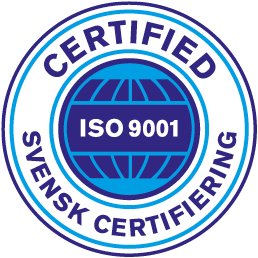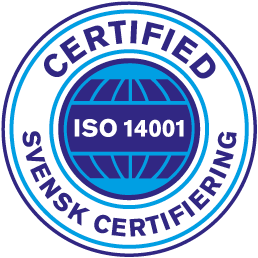Processövervakning
Processövervakning
Ökad kvalitetskrav på ultrarent vatten kräver konstant övervakning av flera parametrar, inklusive ledningsförmåga, TOC-täthet, pH och temperatur för att säkerställa högsta kvalitet. Hydrolabs processövervakningssystem ger dig fullständig kontroll över vattenprocessen för att upprätthålla en hög kvalitet på ditt vatten och möta de krav som ställs på ultrarent vatten.
042-300 91 30
Frågor? Ring kundtjänst
Hydrolab – Process monitoring
Increasing requirements regarding the quality of ultra-pure waters (e.g. for the needs of pharmacy, biotechnology) force a constant need to increase the degree of monitoring and supervision of the process of producing water of such high quality. The parameters whose supervision is increasingly required are conductivity and the content of organic carbon (TOC – Total Organic Carbon).
he Hydrolab company focuses on the preparation of devices equipped with control and measurement panels. These devices are ergonomic, reliable, and also allow the user for convenience and ease of use. In the process of creating new solutions, the company focuses on currently the best and most reliable solutions available on the electronics and automation market. The systems ensure continuous monitoring of the conductivity and temperature of the produced water. The research and development department conducts intensive work on the measurement of the TOC parameter. In addition, the automation system allows you to control many parameters. These are the operating pressure of the system, the level of filling tanks, automatic volumetric dosing of water and many others.
Electrical conductivity
One of the most popular measurement parameters that is proportional to the purity of the water is its electrical conductivity. (Also called specific electrolytic conductivity.) Norms PN-EN 27888 and PN-EN 60746-3 concern determination of electrical conductivity in all water types. The specific electrical conductivity (expressed in [S/m]) is the inverse of the specific electrical resistance (expressed in [Ωm]) measured under specific conditions between the opposite walls of a unit cube of an aqueous solution of specific dimensions.
In practice, the most popular unit of specific electrical conductivity is [μS/cm] or the corresponding unit of specific electrical resistance [MΩ · cm]. Electrical conductivity is a measure of the concentration of ionizing solutes in the sample. During the conductivity measurements an important factor is the cell constant (expressed in [m-1]) used for the measurements, which depends on the geometrical dimensions of this cell. In general, it can be assumed that the cell constant K is given by the formula:
K = l/A
where: l is the length of the electric conductor, while A is the effective cross-sectional area of the electric conductor.
Electrical conductivity is a measure of the current conducted by the ions present in water. It depends on the concentration and nature of the ions as well as the temperature and viscosity of the solution. Pure water has a specific electrical conductivity of 0.05483 μS / cm at 25°C as a result of self-dissociation. The PN-EN 27888 standard specifies in detail the method of preparation of standard solutions with known conductivities at 25°C. Standard solutions can be used during testing, calibration and calibration of conductivity measuring equipment.
Types of measuring instruments
When measuring the electrical conductivity of water, one of two types of instruments can be used. The first type is a device equipped with a dip or flow conductivity cell with two or more electrodes. The second type is a device with induction electrodes. Hydrolab’s products focused mainly on measurements using proprietary constructions of conductometers with a two-electrode flow cell. Flow vessels are recommended for measurements of conductivity less than 100 μS / cm. They are used when measuring ultra-pure water. Air is removed in the flow vessels, which may negatively affect the measurement result of the low conductivity value. According to the PN-EN 27888 standard, for given conductivity measuring ranges, the values of the cell constant value are recommended. It is assumed that the higher the conductivity, the greater the value of the cell constant. When measuring ultra-pure water, vessels with a constant 0.1 or 0.01 are usually used. Hydrolab conductivity meters are equipped with a control system taking into account the constant cell.
Temperature influence
To achieve high precision, conductivity measurements should be made when the sample and conductivity cell are in equilibrium at 25°C ± 0.1°C. This allow to eliminate errors due to the use of temperature compensators or due to mathematical compensation methods. For precision measurements, a thermometer with a measurement accuracy of ± 0.1o°C in the range of measured temperatures should be used. For routine measurements a thermometer with a measurement accuracy of ± 0.5°C is sufficient.
Compensation
However, in practice, measurement at 25°C ± 0.1°C is very difficult in most applications. For this reason, correction of the measured conductivity value is applied, to its equivalent conductivity at 25°C. Correction is made by means of an appropriate correction multiplier, the method of which is determined in detail in PN-EN27888. Thanks to the appropriate compensation method, we obtain a measurement result that can be easily compared with other measurement results, also made at other temperatures. Regardless of the type of temperature compensation, the resulting compensated result will be less accurate than the actual result measured at a reference temperature of 25°C. Formerly 20°C was used as the reference temperature. Hydrolab conductivity meters allow the selection of the reference temperature via the user interface.
Types of temperature compensation
In addition, Hydrolab conductivity meters can be measured in one of three modes:
• without taking into account the temperature compensation of the result
• taking into account linear compensation
(the possibility of changing the α factor determining the percentage change in conductivity caused by a temperature change of 1°C)
• including non-linear compensation, which is the most accurate method of temperature compensation in ultra-pure water applications.
Disturbing factors
During conductivity measurements one should beware of disturbing factors. Measurement results can be affected by sample contaminants in the form of suspensions, greases or oils that can block the surface of the electrodes. It is resulting in a change in the cell constant. Also an important element to be avoided during measurements is the polarization effect. It occurs on the surface of the electrodes. The polarization takes place when the current flowing between the electrodes causes electrolysis and, as a result, partially insulates the surface of the electrodes. To avoid polarization, you can use:
- AC measurements at a sufficiently high frequency
- four or six electrode measurements with separate current and potential measuring electrodes
- inductive or capacitive measurements, consisting of a combination of an electrolytic conductor and an electric measuring circuit through non-conductive media.
The content of organic carbon TOC
Increasing requirements regarding the quality of ultra-pure waters (e.g. for the needs of pharmacy, biotechnology) force a constant need to increase the degree of monitoring and supervision of the process of producing water of such high quality. One of the parameters whose supervision is increasingly required is the content of organic carbon (TOC – Total Organic Carbon). The organic carbon TOC content is determined from the difference of the total carbon TC content and the inorganic TIC carbon content, according to the following formula:
TOC = TC – TIC
There are a number of measuring devices and TOC analyzers that allow for detailed and extremely precise determination of the TOC parameter value. Unfortunately, these instruments are very complicated and their price is very high. In addition, an important disadvantage of the commonly available equipment is mostly the need for off-line operation, i.e. introducing the tested sample into the measuring chamber and subjecting it to analysis. However, in the process of purifying and preparing ultra-pure water, it is important to monitor the parameters of the obtained product on-line, so that you can immediately react to changes (deterioration) in quality and introduce modifications (e.g. replacement of filter elements).
Hydrolab’s research and development department conducts intensive works aimed at developing methods for measuring the TOC parameter. Our priority is to make the measurement possible on-line (in flowing water).
The second important aspect is the miniaturization and reduction of the analyzer production costs. This improvement will allow the analyzer to be embedded as part of the ultra-pure water production line. Developed analyzers belong to technologically advanced high-tech class devices, based on knowledge, which have no counterparts on the global market. Their characteristic features are: miniaturization, energy-saving power supply, low costs and adaptation to continuous (including telemetry) monitoring.






